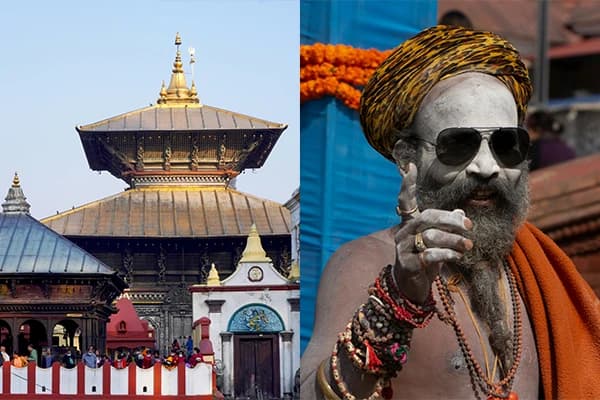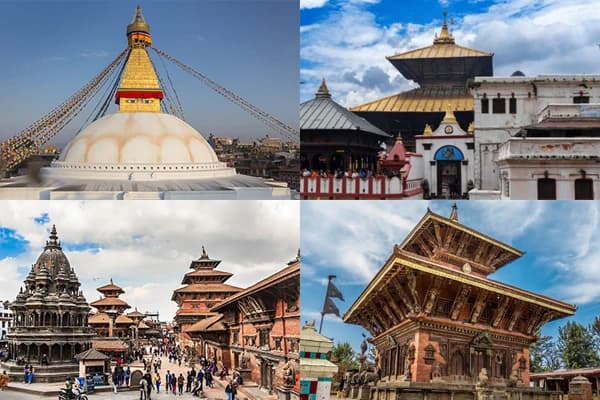History of Saga Dawa Festival
The origin of the Saga Dawa festival is connected with the religious traditions of Tibetan Buddhism. The festival Saga Dawa was first introduced to Tibet in the seventh century. It commemorates the incarnation, enlightenment, and death of Buddha.
The three epic events of the Saga Dawa are considered the Three Jewels of Buddhism. This festival has an important place in the Buddhist calendar. The development of Buddhism goes hand in hand with the celebration of the festival.
The Dhamma practice is important during this festival, including things like a lamp burned with butter, and presenting white scarves (Khadas). Likewise, the Tarboche flagpole is an important event that represents the global dissemination of Buddha’s teachings. It has been celebrated by Tibetan Buddhists for centuries while preserving their cultural wealth and ageless spirituality side by side.
Saga Dawa festival has been increasing the significance of spirituality as it marks Buddhism via several events. Buddha’s birth marks the foundation of the Saga Dawa festival. Siddharta Gautam of Lumbini gave up his royal fortune and lifestyle to find a way to help those less fortunate and Tibetan Buddhists commemorate this event by burning butter lamps in temples and households on the seventh day of the festival.
During the Saga Dawa Festival, Buddhists from all over the world commemorate the Enlightenment or the Great Awakening at the Bodhi Tree in Bodh Gaya of the Buddha on the 15th day. On this day, Buddha realized four noble truths i.e truth of misery (suffering and uneasiness or dissatisfaction), the truth that misery arises, the desire for pleasure and for being and no being (Samudaya), the truth for eliminating this craving(nirodhu), and the truth of removing the result of a following a methodical way or path (magga). These four truths are the cornerstone of Buddhist philosophy.
During the fourth lunar month’s full moon day, the festival marks the death of Budhha, Parinirvana where Buddhists think of it as an enlightenment rather than the end of the Budhha. This frees one from the endless cycle of birth and death. The spiritual landmark of the Saga Dawa festival honors the three anniversaries that have equal importance to Buddhism. The Tibetan Buddhist festival, Saga Dawa is a unique opportunity to illustrate the path of Buddha’s compassion and wisdom throughout the world.
Religious meaning of the Saga Dawa festival
The festival marks a renewal of the Buddha’s teaching and centers the road to enlightenment and freedom from the suffering of samsara. The festival reflects the deep spiritual journey of the rites, customs, and observances of the period which is discussed in detail below:
- Honoring the Buddha's Life and Legacy
The Saga Dawa festival marks the birth, enlightenment, and Pariniravana of the Buddha which defines milestones of Buddhism.
- Buddha's Birth: Buddha’s birth is celebrated on the 7th day of the Saga Dawa festival. Buddha was born as the prince Siddhartha Gautam in Lumbini. With great joy and reverence, Buddha’s birth is celebrated and it symbolized the moment when this Universe received a remarkable spiritual teacher. Devotees celebrate this day by lighting butter lamps, burning incense, and offering prayers at the temples and shrines. Buddhists perform charity acts as per their capabilities which represent the compassion and kindness of the Buddha.
- Buddha's Enlightenment: It is celebrated on the 15th day of the Saga Dawa festival. It marks the moment when Siddharta Gautam became Buddha via enlightenment. He became enlighted after years of ascetic practices under the Bodhi Tree in Bodh Gaya, India. During this day, Buddha discovered the four noble truths, the foundational principles of Buddhism. Followers celebrate this day via deep meditation, praying, and doing merit-making activities.
- Buddha's Parinirvana: It marks the release of Buddha from the cycle of birth, death, and rebirth(samsara). It is celebrated on the 15th day of the Saga Dawa festival and serves as a reminder of Buddha’s teaching on impermanence. Buddhists engage in Buddhist teaching (Dharma talks) and contemplation on the transient nature of life.
Saga Dawa festival has unique rituals and practices filled with deep meaning and reflection of the Buddha’s teachings. The rituals have value and tenets of Buddhism along with spiritual connection among practitioners.
- Prayer and Meditation: The Tibetan Buddhists, monks, nuns, and laypeople practice praying and meditation while reciting the mantra, “Om Mani Padme Hum.” This mantra is filled with compassion and meditation serves self-reflection and spiritual cultivation among them.
- Visiting Temples: Devotees go to monasteries and gompas to make offerings and receive a blessing while lighting butter lamps and offering khadas. Lighting lamps symbolize wisdom and enlightenment while offering Khadas to Budhha statutes embodies respect and reverence.
- Performing Acts of Generosity: The Buddha’s teaching emphasizes compassion and generosity, so devotees offer the “Daan” act of giving food to monks, donating to the helpless, and contributing to community services. These acts will earn spiritual benefits and they believe in receiving positive karma.
- Circumambulation: Tibetan Buddhist people engage in circumambulation which means walking clockwise around sacred sites like Bouddhanath and Swoyambhunath while spinning the Dharma wheel.
- Fasting and Vegetarianism: Practitioners adopt a vegetarian diet and fasting throughout the months. They avoid eating any kind of meals that are prepared by abusing animals and birds. They cultivate compassion towards all sentient beings which symbolizes spiritual discipline.
- Refraining from Harmful Actions: Buddhist refrains himself from killing, stealing, sexual misconduct, lying, and intoxication throughout the months. It symbolizes the moral discipline and integrity cultivation among the devotees.
During Saga Dawa, local Tibetans promote compassion, wisdom, and mindfulness which has positive impacts on the society and culture of the Tibetan communities.
- Tarboche Flagpole Ceremony
The Tarboche Flagpole ceremony is also known as the raising of the Giant prayer flagpole. This event is considered most important during the Saga Dawa festival. The flagpole-raising ceremony drenched in symbolism and religious significance is held at the Tarboche, Kailash Kora, one of the most pilgrimage sites in Tibet.
The flagpole is decorated with different colors of prayer flags which honor Buddha’s teachings while representing the expansion in all directions just like the wind spreads prayers of good throughout the world, which in turn, pleases the gods. The old flag is lowered and removed then it is replaced with new ones inscribed with prayers and mantras. Then, the raising of the flagpole is done with the help of gathered devotees.
This act fosters unity and communal spirit among the participants and is also categorized as a meritorious act. The flagpole should be raised vertically, if it tends to any direction then misfortunes fall in that direction for the coming year. When the ceremony of erecting the flagpole is completed they celebrate it by cheers, music, and dancing.
This marks the start of the Saga Dawa festival. It displays the combined devotion, effort, joy, and pervasive influence of the Buddha’s teaching. The ritual embodies spiritual warmth and communal unity and marks the spiritual aspects of individual reflection and devotion.
Saga Dawa Festival celebration and Tibetan culture
Tibetan people have a huge importance on the Saga Dawa Festival. It changes how people show their culture, make friends, and feel like they belong to a group.
- Preparations: Tibetan communities prepare for the festival weeks in advance with anticipation. They begin by cleaning and decorating their homes and stock their business with supplies for visitors and pilgrims. The monasteries and temple are cleaned thoroughly and new prayer flags are added.
- Participation: The Saga Dawa festival is celebrated by everyone from young ones to the elderly people. Everyone in society irrespective of their age and social barrier participates with enthusiasm during the festival. The value of unity and collective action of the people is represented during the Tarboche Flagpole ritual.
- Impact on Community Spirit: Saga Dawa helps tighten the bond between community members while fostering a sense of solidarity and shared spiritual purpose. The collective prayer recitation and circumambulation bind the community together while it encourages generosity and kindness towards the society members.
It is a platform for cultural and spiritual heritage transmission, local Tibetan people share the stories of Buddha's life and teachings with their young ones. The festival shapes the social dynamics of Tibetan societies along with its spiritual significance. Saga Dawa acts as a unifying force that brings the community members together with spiritual observance and religious celebration.
Economic implications of the festival
Tibetan communities look forward to the Saga Dawa festival as the first and foremost spiritual observance. It is of great importance and has substantial implications for Tibetan people. It also contributes to the local business opportunities, tourism, and overall growth of the Tibetan locals.
- Tourism: Every year, many tourists and pilgrims from all around the world travel to Nepal to celebrate the Saga Dawa festival. These incoming pilgrimages boost the local economy via staying in lodges/hotels, dining at local restaurants, and buying souvenirs from local shops. They participate in the festival while increasing the flow of foreign money.
- Local Business Opportunities: The festival increases the inflow of visitors which benefits the local business. There is a crowd of buyers in vendors of religious artifacts, traditional Tibetan clothes, and local food, to transport services catering to the influx of tourists. It increases the income source of many local families.
- Economic Growth: The festival benefits the economy of the region while it serves as a medium for the development of infrastructures like roads and accommodation which favors the growth of the local economy.
- Cultural Preservation and Economic Value: The inherent economic value is linked with the cultural and spiritual significance of the festival. The tourist is often attracted by the traditional arts, crafts, music, and dance of the festival. It helps to preserve the Tibetan cultural heritage by making a lane for artisans and performers.
The spiritual festival, Saga Dawa also plays a vital role in uplifting the economy by attracting tourism, enhancing local business, and developing local communities.
Eight Mahayana percepts
The primary day of the Saga Dawa festival is the full moon day where you can gather all the merit by doing good deeds. The monks perform special ceremonies in the early morning at the monasteries and Tibetan and other practitioners gather together to take the eight Mahayana precepts for enlightenment and guide others for enlightenment. The following eight Mahayana precepts are taken as oath during the full moon of the Saga Dawa festival.
- Do not harm or take away anyone's life, directly or indirectly.
- Do not take other people's belongings without their permission.
- Be truthful and honest in your words and actions.
- Do not engage in sexual activity.
- Avoid the consumption of intoxicating substances.
- Have only one meal that day, taken before noon. Once you stop eating for thirty minutes, the meal is considered finished. You can have soft drinks at other times of the day, but not undiluted whole milk or fruit juice with pulp.
- Enjoy simple and humble living, and avoid sitting on expensive beds.
- Be free of materialism, such as jewelry, makeup, and perfumes.
These 8 Mahayana precepts offer a base structure for living a precious life with more meaning and purpose. These principles help in cultivating a deep spiritual practice and living your life with high moral values. The 8 Mahayana precepts play the role of reliable and effective means of developing, sustaining, and strengthening our commitment to spiritual growth and fulfillment.
Conclusion
Saga Dawa festival is one of the most devout Buddhist festivals celebrated by Tibetan Buddhists. The festival is a unique opportunity to learn about the culture and traditions of Tibetan Buddhist people and their beliefs. It is one of the most unique cultures that thrives on the roof of the world.
It serves as a window of richness and diversity of human cultural and spiritual manifestation that is worth experiencing and celebrating with locals. The festival brings feelings of belonging, togetherness, and continuity despite the many changes the society has been facing for years. The Saga Dawa festival is a symbol of humanity, finding peace, compassion, and understanding in this frequently changing world. If you are interested in participating in the Saga Dawa festival make sure to contact us.





